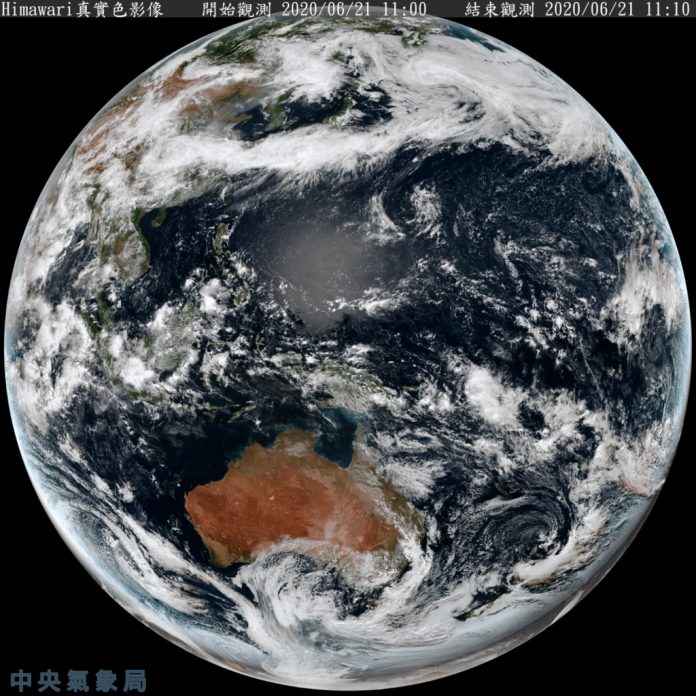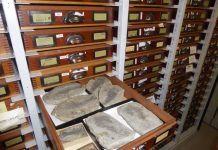
By Jim Brace-Thompson
Forget compasses and clinometers. Forget stereonets, pedometers, and altimeters. Forget planetabling and the painstaking work of geologic mapping by hand. Heck, forget even stepping foot in the field at all! Per an article in a recent issue of the journal Science, today’s earth scientists are relying on fleets of radar satellites to “measure movements on Earth like never before.”
Color-coded radar images by satellites high above Earth are revealing how the slopes of a volcano may be rising or lowering as the volume of magma deep below waxes or wanes. It is revealing how land is deformed down to the scale of centimeters and even millimeters as a result of massive construction projects—and just how quick the rate of deformation is. It’s measuring slippage along fault lines, the speed of glacial movement, and sinking ground levels as water is sucked out of aquifers. All this as it “unfolds in real time” with the help of supercomputers and advances in computing power.
Writing in Science, journalist Julia Rosen notes, “a remote sensing technique called interferometric synthetic aperture radar (InSAR), first demonstrated more than 30 years ago, is reaching its heyday.” As many as 50 SAR satellites are now monitoring the surface of our Earth, giving geologists, geographers, hydrologists, glaciologists, the agricultural industry, oil and construction industries, and others detailed data on tiny movements on the planet’s surface like never before. And that’s just the beginning. Another dozen satellites are scheduled for launch this year alone, and hundreds more are planned. In mapping and monitoring our Earth’s ever-shifting, ever-heaving, ever-changing surface, it seems the best is yet to come!
Author: Jim Brace-Thompson
 Jim began and oversees the AFMS Badge Program for kids, has been inducted into the National Rockhound & Lapidary Hall of Fame within their Education Category, and is the president-elect for the American Federation of Mineralogical Societies.
Jim began and oversees the AFMS Badge Program for kids, has been inducted into the National Rockhound & Lapidary Hall of Fame within their Education Category, and is the president-elect for the American Federation of Mineralogical Societies.
Contact him at jbraceth@roadrunner.com.
If you enjoyed what you’ve read here we invite you to consider signing up for the FREE Rock & Gem weekly newsletter. Learn more>>>
In addition, we invite you to consider subscribing to Rock & Gem magazine. The cost for a one-year U.S. subscription (12 issues) is $29.95. Learn more >>>


 Hide i
Hide i












